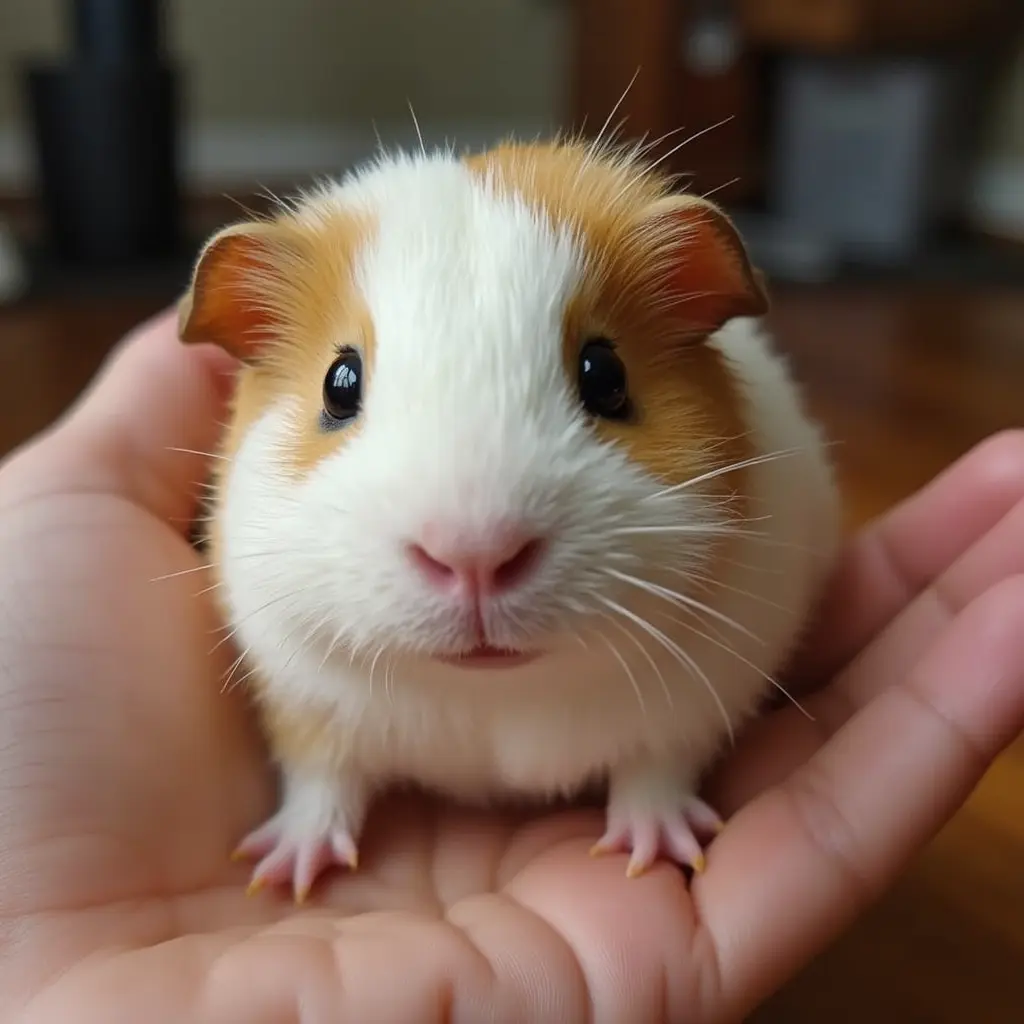Guinea pigs are more than just cute, cuddly pets. They are affectionate, playful, and incredibly social animals, making them wonderful companions for people of all ages. Whether you’re considering adopting a guinea pig or are already a proud owner, this guide will walk you through everything you need to know—from selecting the right guinea pig to setting up their home and feeding them the proper diet.
What Are Guinea Pigs?
hi is a small, herbivorous rodents that are native to the Andes Mountains in South America. Despite their name, guinea pigs are neither pigs nor do they come from Guinea. The name likely comes from early explorers who, mistaken by their pig-like squeaks and rounded bodies, gave them this misleading name.
they are very social creatures that enjoy companionship, and they tend to feel most comfortable when they have another guinea pig around. They are known for their gentle, affectionate nature, and they communicate through various sounds like wheeking, chirping, and purring. With proper care, guinea pigs can live up to 6 years, though some have been known to live even longer, up to 8 years.


Choosing the Right Guinea Pig
When it comes to choosing the right guinea pig, there are several factors to consider, including breed, temperament, and health. Below are some of the most common breeds of guinea pigs:
- American‘s: This breed is the most common, known for its smooth, short coat. American guinea pigs are low-maintenance and are typically easier to care for, making them a great choice for first-time pet owners.
- Abyssinian‘s: Abyssinians are distinctive for their curly, rosette-shaped fur. They require a bit more grooming than American guinea pigs but are still fairly easy to care for.
- Peruvian : Peruvian guinea pigs are known for their long, silky hair that requires regular care to prevent tangling and matting. They are a striking breed but require more time and effort in terms of grooming.
- Teddy : Teddy guinea pigs have a soft, curly coat, resembling a teddy bear. They are low-maintenance when it comes to grooming compared to the longer-haired breeds, but they are just as affectionate.
When selecting one, ensure that it is active, healthy, and free of any visible signs of illness. Look for a guinea pig with clear, bright eyes, clean fur, and an energetic personality. If you are adopting from a shelter, ask about its health history and behavior to make sure it’s a good fit for your home.
Setting Up Their Home
Creating a comfortable and stimulating environment for your’s is crucial for their happiness and well-being. Here’s how to set up their habitat:
- Cage Size: he need plenty of room to move around. The minimum recommended cage size for one is at least 7.5 square feet. If you have more than one , increase the space accordingly. Ensure the cage has solid flooring and is well-ventilated.
- Bedding: Choose bedding that is absorbent and dust-free, such as paper-based or aspen wood shavings. Avoid cedar and pine shavings, as they can be harmful to their respiratory system.
- Hideaways: he need a safe space to hide and relax. Provide them with small houses or tunnels where they can retreat when they need to feel secure.
- Exercise: he need plenty of space to explore. Providing them with safe, guinea pig-friendly toys or a larger playpen where they can roam outside the cage will keep them mentally stimulated and physically active.


Feeding
Guinea pigs are herbivores, so they require a diet rich in hay, fresh vegetables, and fruits. Here’s what you should include in their diet:
- Hay: Timothy hay is the best option for guinea pigs as it is high in fiber and helps with digestion. Hay should make up the majority of their diet and be available at all times.
- Fresh Vegetables: Offer fresh vegetables such as bell peppers, cucumbers, carrots, and leafy greens like romaine lettuce. Avoid iceberg lettuce, as it lacks nutrients.
- Pellets: Guinea pigs can be fed high-quality pellets that are specifically formulated for their nutritional needs. Make sure the pellets are free of seeds or dried fruits, which can cause obesity or digestive issues.
- Vitamin C: Guinea pigs cannot produce their own Vitamin C, so it’s important to include foods that are rich in this vitamin, such as bell peppers, broccoli, and citrus fruits. You can also provide Vitamin C supplements in their water or as treats.


Regular Care and Grooming
Guinea pigs require regular grooming, especially certain breeds with longer hair. Here are a few grooming tips:
- Brushing: If you have a guinea pig with long hair, brush them regularly to avoid tangles. Even short-haired guinea pigs benefit from occasional brushing to remove loose hair.
- Nail Clipping: Trim their nails regularly to prevent them from becoming too long and uncomfortable. Guinea pigs’ nails should be trimmed every 3-4 weeks, depending on how quickly they grow.
- Ear and Eye Care: Check your ’s eyes and ears regularly to ensure there are no signs of infection. Their ears should be clean and free of wax buildup.
Conclusion
Caring for a guinea pig involves more than just feeding and cleaning—they are social animals that require a balanced diet, a comfortable living space, and regular interaction with their owners. Whether you’re adopting a onefor the first time or are looking to improve your care routine, the information in this guide can help you provide the best possible life for your furry friend.